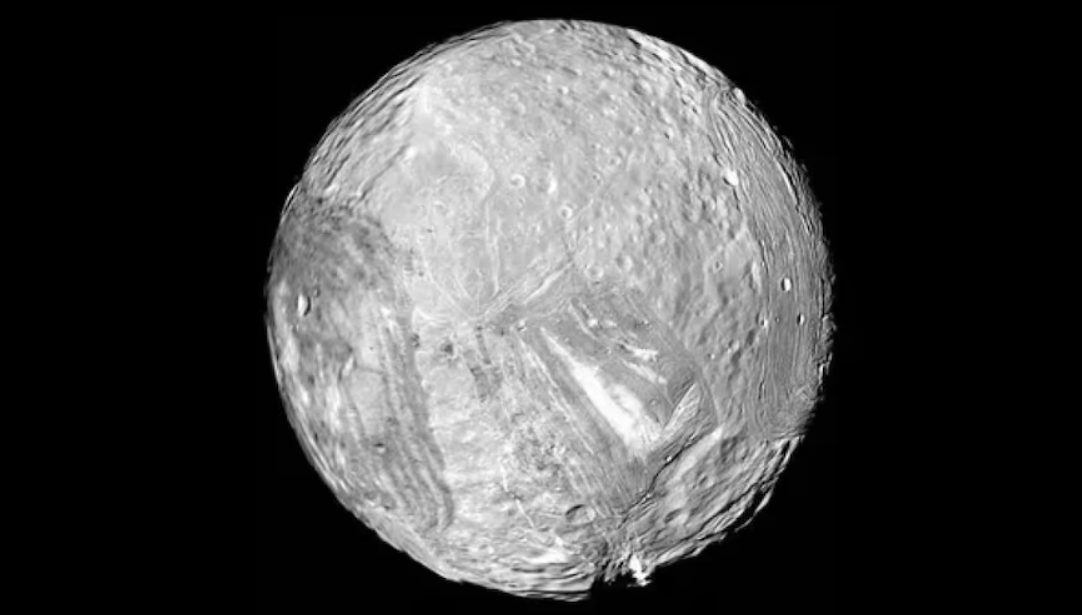Fresh findings from Voyager 2 indicate that Uranus’ moon Miranda might have once harbored a deep ocean, contributing to its distinct characteristics.

Uranus’ icy moon Miranda, captured by NASA’s Voyager 2 spacecraft on Jan. 24, 1986
Newly analyzed images from NASA’s Voyager 2 have renewed interest in Miranda, one of Uranus’ smaller moons. Recent research suggests that Miranda may once have harbored an ocean beneath its icy crust. While scientists have long speculated that moons of gas giants like Jupiter and Saturn—such as Europa and Enceladus—could conceal hidden oceans, focus is now shifting to Uranus’ moons as possible ocean worlds.
Using data collected by Voyager 2 in 1986, a team of planetary scientists led by Tom Nordheim from Johns Hopkins Applied Physics Laboratory recently reexamined images of Miranda’s unique geological landscape. These images reveal a varied terrain marked by grooved surfaces, steep cliffs, and large impact craters. To better understand the origins of these formations, the team used computer models to simulate Miranda’s internal structure. Their analysis suggests that a substantial ocean may have existed 100–500 million years ago, likely lying beneath about 30 kilometers of ice and reaching depths of up to 100 kilometers.
Miranda’s Complex Geology Reveals Clues to an Icy Past
According to recent research published by the Institute of Physics (IOP), the discovery of a potential ancient ocean on Miranda—a moon only about 235 kilometers in diameter—is surprising due to its small size. Lead researcher Tom Nordheim explains that this finding challenges previous assumptions, suggesting Uranus’ moons may hold more secrets than once believed. He notes that Miranda’s gravitational interactions with nearby moons may have generated enough internal frictional heat, a process known as “tidal heating,” to keep this ocean liquid for millions of years. This phenomenon mirrors the forces that prevent Jupiter’s moon Europa from freezing solid.
Unanswered Questions Await Future Exploration
While Voyager 2’s data offers intriguing insights, confirming the existence of an ocean on Miranda is unattainable without a dedicated mission. For scientists like Nordheim, these findings heighten the excitement around the prospect of a return mission to Uranus. By closely examining its icy moons, researchers aim to unravel further mysteries regarding the formation and evolution of ocean worlds in the outer solar system. In the meantime, scientists continue to extract as much information as possible from Voyager 2’s mission, hoping it may still reveal more answers about Uranus’ remote and icy moons.



